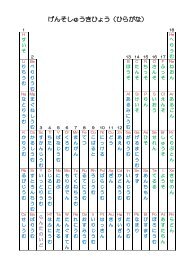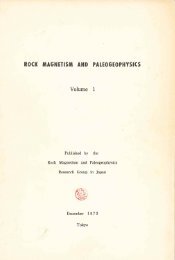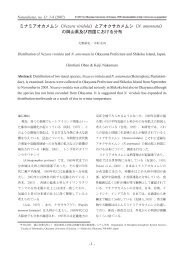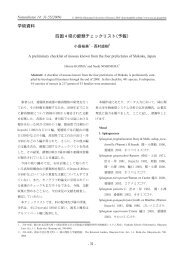You also want an ePaper? Increase the reach of your titles
YUMPU automatically turns print PDFs into web optimized ePapers that Google loves.
<strong>Python</strong> <strong>Tutorial</strong>, Release 2.6.2<br />
between the various file formats. There are also many different operations you might want to perform on sound<br />
data (such as mixing, adding echo, applying an equalizer function, creating an artificial stereo effect), so in addition<br />
you will be writing a never-ending stream of modules to perform these operations. Here’s a possible structure for<br />
your package (expressed in terms of a hierarchical filesystem):<br />
sound/<br />
__init__.py<br />
formats/<br />
__init__.py<br />
wavread.py<br />
wavwrite.py<br />
aiffread.py<br />
aiffwrite.py<br />
auread.py<br />
auwrite.py<br />
...<br />
effects/<br />
__init__.py<br />
echo.py<br />
surround.py<br />
reverse.py<br />
...<br />
filters/<br />
__init__.py<br />
equalizer.py<br />
vocoder.py<br />
karaoke.py<br />
...<br />
Top-level package<br />
Initialize the sound package<br />
Subpackage for file format conversions<br />
Subpackage for sound effects<br />
Subpackage for filters<br />
When importing the package, <strong>Python</strong> searches through the directories on sys.path looking for the package<br />
subdirectory.<br />
The __init__.py files are required to make <strong>Python</strong> treat the directories as containing packages; this is done to<br />
prevent directories with a common name, such as string, from unintentionally hiding valid modules that occur<br />
later on the module search path. In the simplest case, __init__.py can just be an empty file, but it can also<br />
execute initialization code for the package or set the __all__ variable, described later.<br />
Users of the package can import individual modules from the package, for example:<br />
import sound.effects.echo<br />
This loads the submodule sound.effects.echo. It must be referenced with its full name.<br />
sound.effects.echo.echofilter(input, output, delay=0.7, atten=4)<br />
An alternative way of importing the submodule is:<br />
from sound.effects import echo<br />
This also loads the submodule echo, and makes it available without its package prefix, so it can be used as<br />
follows:<br />
echo.echofilter(input, output, delay=0.7, atten=4)<br />
Yet another variation is to import the desired function or variable directly:<br />
from sound.effects.echo import echofilter<br />
44 Chapter 6. Modules











